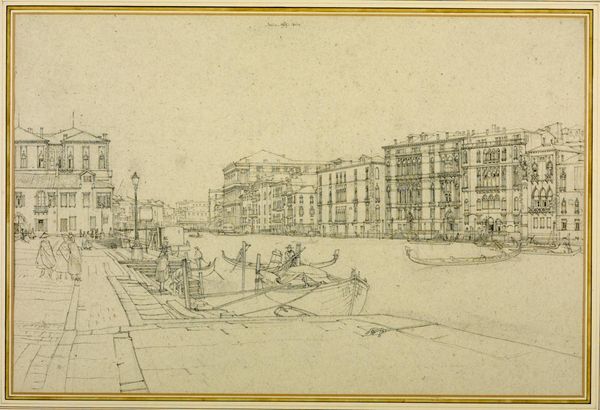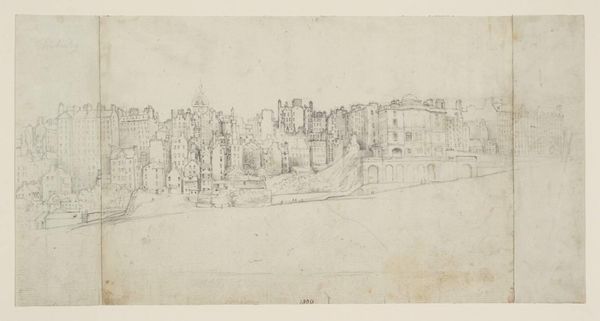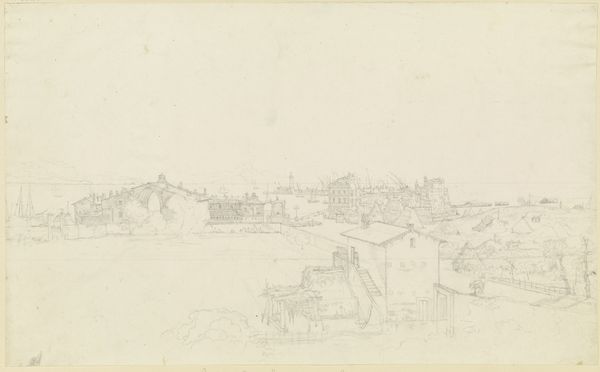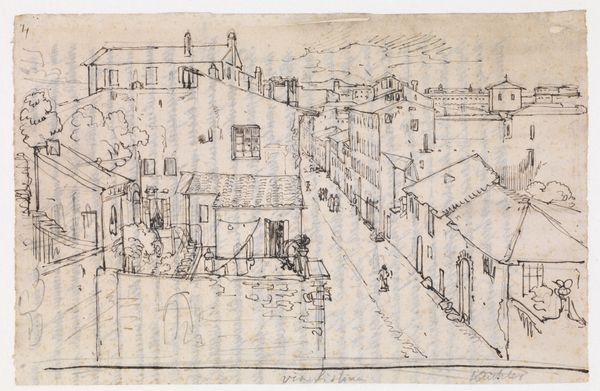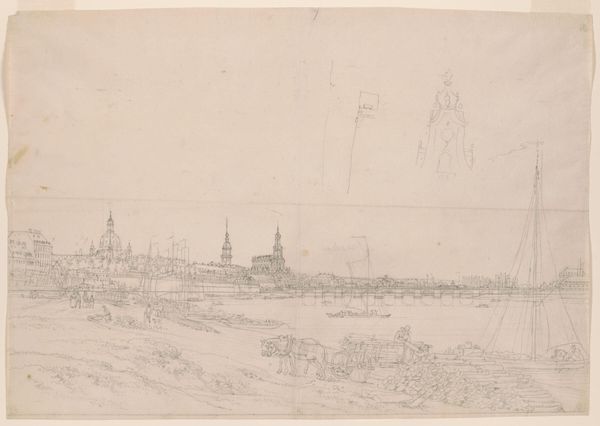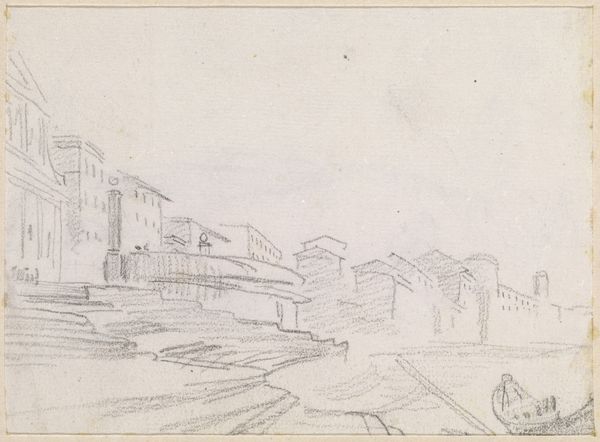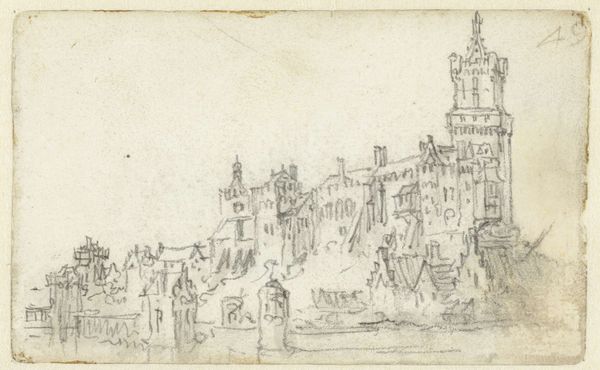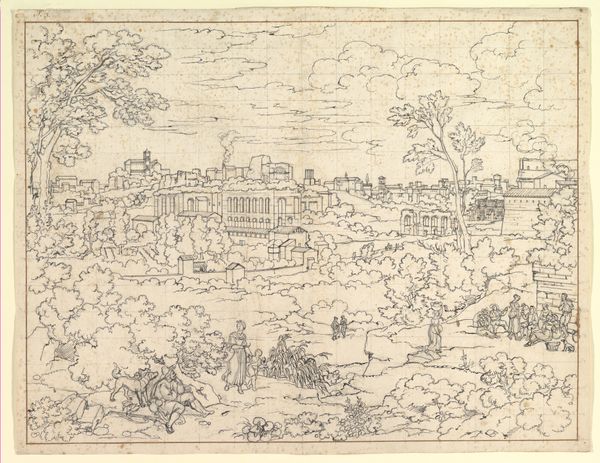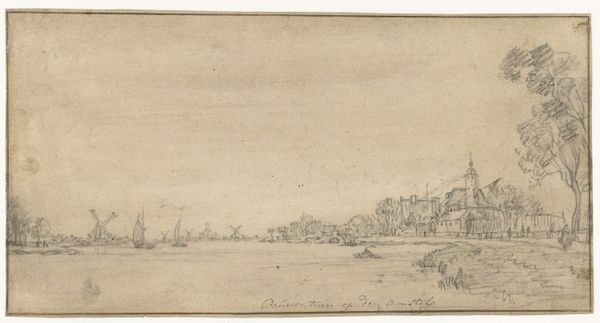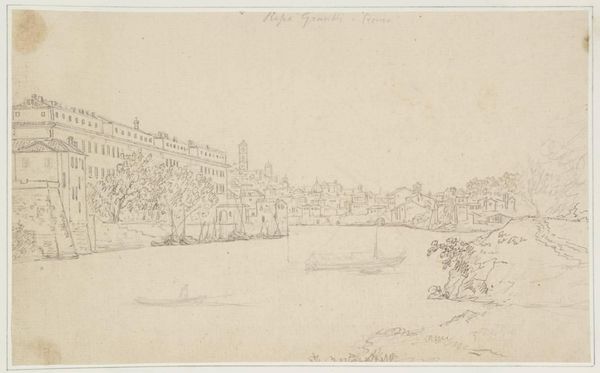
Dimensions: height 195 mm, width 385 mm
Copyright: Rijks Museum: Open Domain
Curator: Ah, here we have "Gezicht op de Canal Grande en Ponte del Rialto te Venetië," a work made sometime between 1730 and 1780. It's attributed to Bernardo Bellotto, rendered with ink and etching on paper. A very different mood than one usually associates with Venice, no? Editor: Absolutely. My initial feeling is a strange stillness, considering the subject. All the intricacy makes me feel like I'm looking at a complicated stage set, but one that's only halfway built. Curator: That's a striking observation. This piece does reveal the nuts and bolts of cityscape construction in the Baroque style. Note how the architecture dominates, a carefully arranged backdrop shaping the watery stage of the Grand Canal. The Rialto Bridge is there but just, matter of fact, among everything else. Editor: The detail is remarkable – you can almost hear the echoes of conversations drifting across the water. But I sense an underlying… almost architectural melancholy. Venice, as a power, was waning at the time this was created, right? Is that woven into how the scene is presented? Curator: Precisely! Bellotto, nephew of Canaletto and following his uncle’s footsteps in many ways, documents but also subtly comments. The precise lines of the etching emphasize structure, order, a desire to contain perhaps, the fluidity of a floating city in decline. Consider how Venice itself was marketed, from this era onwards: as an illusion, a stage, something passing. Editor: So this piece isn’t just documentation; it's an elegy, quietly rendered. And you are right: I do sense that it portrays what’s *expected* of a landscape drawing instead of an actual living landscape! I now see the tension of artifice at work here, how social and political forces might compel the need for this representation. I didn’t quite appreciate that initially. Curator: Well, the beauty of a work like this is that it continues to yield new insights, even after centuries! The interplay between Bellotto’s sharp observational skills and the broader historical context makes it continually relevant, don't you think? Editor: Agreed, and there’s always a space for more melancholy if you really need it, right? This piece truly highlights Venice's stagecraft... Thank you for bringing to light the nuances within this beautiful portrayal.
Comments
No comments
Be the first to comment and join the conversation on the ultimate creative platform.
